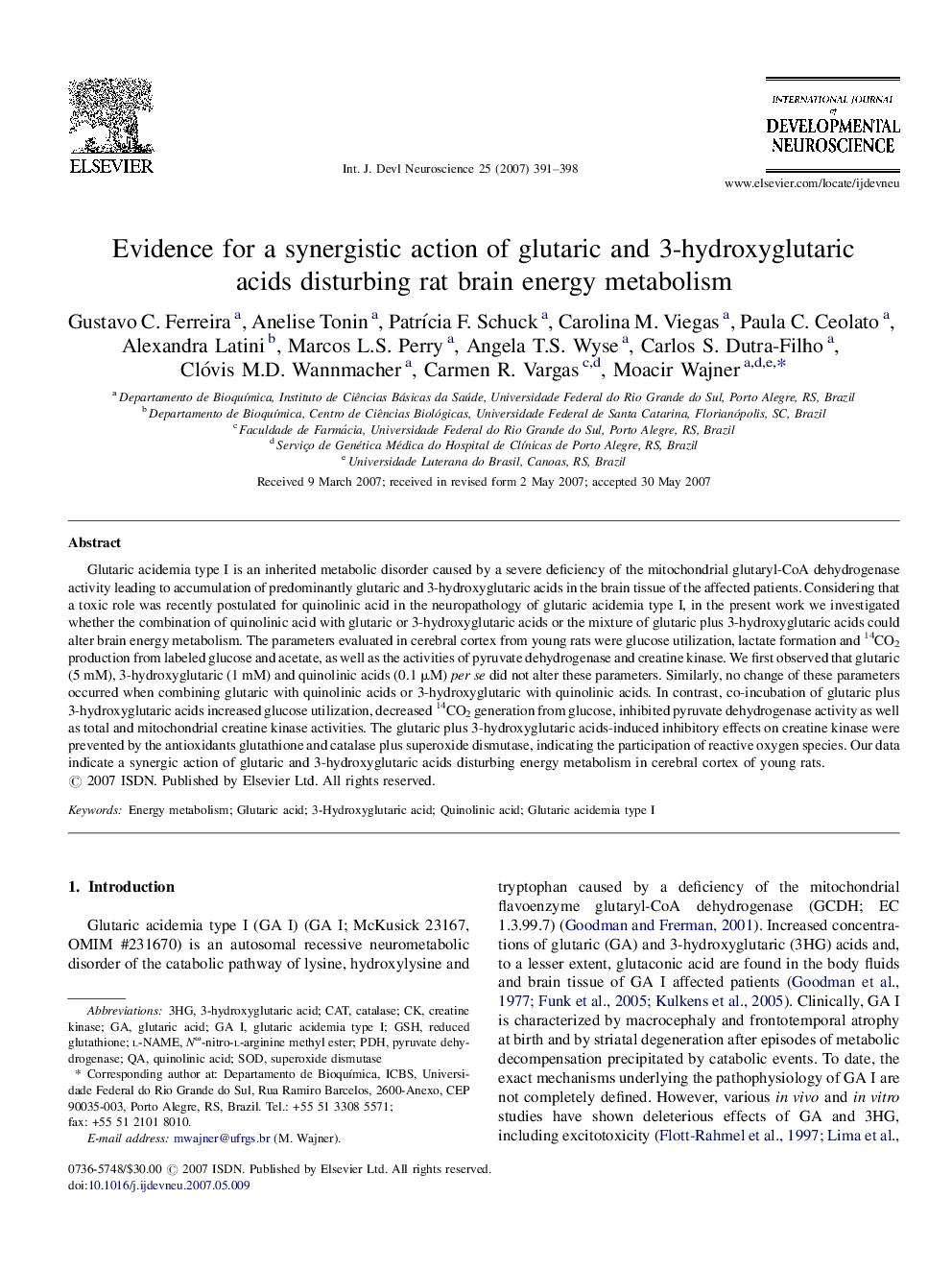| Article ID | Journal | Published Year | Pages | File Type |
|---|---|---|---|---|
| 2786665 | International Journal of Developmental Neuroscience | 2007 | 8 Pages |
Glutaric acidemia type I is an inherited metabolic disorder caused by a severe deficiency of the mitochondrial glutaryl-CoA dehydrogenase activity leading to accumulation of predominantly glutaric and 3-hydroxyglutaric acids in the brain tissue of the affected patients. Considering that a toxic role was recently postulated for quinolinic acid in the neuropathology of glutaric acidemia type I, in the present work we investigated whether the combination of quinolinic acid with glutaric or 3-hydroxyglutaric acids or the mixture of glutaric plus 3-hydroxyglutaric acids could alter brain energy metabolism. The parameters evaluated in cerebral cortex from young rats were glucose utilization, lactate formation and 14CO2 production from labeled glucose and acetate, as well as the activities of pyruvate dehydrogenase and creatine kinase. We first observed that glutaric (5 mM), 3-hydroxyglutaric (1 mM) and quinolinic acids (0.1 μM) per se did not alter these parameters. Similarly, no change of these parameters occurred when combining glutaric with quinolinic acids or 3-hydroxyglutaric with quinolinic acids. In contrast, co-incubation of glutaric plus 3-hydroxyglutaric acids increased glucose utilization, decreased 14CO2 generation from glucose, inhibited pyruvate dehydrogenase activity as well as total and mitochondrial creatine kinase activities. The glutaric plus 3-hydroxyglutaric acids-induced inhibitory effects on creatine kinase were prevented by the antioxidants glutathione and catalase plus superoxide dismutase, indicating the participation of reactive oxygen species. Our data indicate a synergic action of glutaric and 3-hydroxyglutaric acids disturbing energy metabolism in cerebral cortex of young rats.
